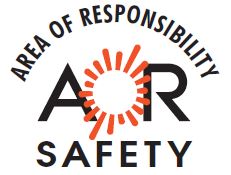Title Page
-
Client / Site
-
Conducted on
-
Prepared by
EQUIPMENT: Are PITs equipped with...
-
1. Presence warning lights (typically orange flashing or strobe light)?
-
2. Fire extinguishers (on LPG PITs)?
-
3. Overhead guard/roll-over protection which is free of obstructions?
-
4. Clearly legible nameplates and safe working load tags?
-
5. Lift attachments (fork extensions, etc.) that certified and marked with lift capacity, and are unmodified from their original, engineered condition?
-
6. Speed governors set at 5 mph?
-
7. Interlocked seatbelts?
-
8. Blue rear warning spotlights?
-
9. An impact sensing system (either with automatic shutoff or email notification to a manager upon impact)?
-
10. PIN code or swipe card access start-up (recommended in conjunction with impact sensing email notification system)?
-
11. A proximity badge alarm warning system?
-
12. Load stability sensors or weight scales (for high risk or highly varied loads)?
ENVIRONMENT: Has the physical environment been controlled such that...
-
13. All slopes & grades are within the limits of the PIT gradeability ratings? (Must measure all slopes/grades to verify this)
-
14. All access and crossing points are safely engineered (warning lights, 360/convex mirrors, and/or stop signs are required at any blind corners)?
-
15. Exclusion zones (where pedestrians and/or PIT not allowed) are clearly marked?
-
16. Safe unloading zones, including parking lot unloading zones, are clearly marked?
-
17. Designated charging/refueling areas clearly defined and protected? Battery charging stations have an eyewash and a safety shower within a 10 second walk?
-
18. Pedestrian walkways are clearly identified & marked? Marking must be bright, bold, and in accordance with 5S color coding.
-
19. Pedestrian walkways located at the site perimeter or thoughtfully placed to minimize potential for PIT interaction and overhead hazards?
-
20. Designated material storage and staging areas identified & marked (to keep aisleways clear)?
-
21. Pedestrian walkways protected against impact by suitably engineered barriers and guards wherever possible?
-
22. Docks are equipped with mechanical trailer restraint systems (e.g. Dok Loks)?
-
23. Docks are equipped with barriers strong enough to prevent a PIT from driving over the edge of the dock?
POLICIES/PROCEDURES: Are policies/procedures established and followed to ensure that...
-
24. Required PPE is worn at all times in production areas?
-
25. Pre-shift PIT inspections are complete & their findings are managed? Must complete a review of daily inspection documentation to verify.
-
26. PIT maintenance is performed by authorized personnel and in accordance with manufacturer's specifications?
-
27. PITs are red-tagged AND locked out when unsafe and during maintenance/servicing?
-
28. PITs are lifting no more than their load capacity? Must have a way of verifying that load capacities are not exceeded. Relying on the forklift sounds/struggle is not sufficient.
-
29. There is a responsible person identified for supervising dock operations & PIT operations on all shifts?
-
30. Trailer departure is controlled (i.e. wheel chocking, glad hand locks, and driver/key control)?
-
31. Loading/unloading only takes place at designated, approved locations?
-
32. Pedestrians only approach a PIT when it is in safe condition (power source idle, forks lowered, parking brake engaged, communication with driver)?
-
33. Pedestrians never use roller doors through when PIT travel, only designated pedestrian access points? Roller doors should be used for mixed vehicle/pedestrian traffic.
-
34. Non-critical pedestrians obtain authorization before entering PIT areas?
-
35. Critical pedestrians follow an access protocol when they need to enter PIT areas? (In other words, they follow a process rather than entering freely with no precautions)
-
36. The Division's PIT program is assessed against this standard every year? (leave blank if this is the first assessment)
-
37. Risk assessments/safe operating procedures/job hazard analyses for PIT operations are documented?
-
38. Manlift attachments are not used on PITs?
-
39. Safe PIT operation/operators are rewarded & recognized?
TRAINING: Does training ensure that forklift operators...
-
40. Are all certified by an authorized instructor? Must conduct a review of all forklift operator certifications and ensure 100% compliance to get full credit.
-
41. Always travel with the loads lowered and look in the direction of travel with a clear, unobstructed view?
-
42. Never carry suspended loads or lift their loads over other coworkers?
-
43. Always travel with the loads lowered?
-
44. Do not overload their PIT?
-
45. Carry their load centered on the forks?
-
46. Slow to a near-stop and honk their horn as they approach intersections?
-
47. Never leave PITs running unattended and do not leave keys in the ignition (when possible to remove keys)?
Reviewed By
-
Assessor Acknowledgement
-
Select date
-
Division Acknowledgement
-
Select date










